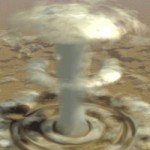 Do not take any medicine unless directed to do so by a physician or public health authorities.
Do not take any medicine unless directed to do so by a physician or public health authorities.
If you are reading this at the time of a nuclear emergency, then there are probably other priorities that are much higher than obtaining potassium iodide. Take care of those other priorities first. The following resources will provide you with useful information, and we recommend that you download them as soon as possible:
- Nuclear War Survival Skills at Oregon Inst. of Sci. & Med. (PDF version)
- Nuclear War Survival Skills at ki4u.com
- Nuclear War Survival Skills at Google Books (many images missing)
- Nuclear War Survival Skills paperback at Amazon
- What to do if a nuclear disaster is imminent
The author of this website is totally incompetent to offer any type of medical advice. Therefore, please do not take any pills that are recommended by this website, or any other website for that matter. You should only take pills that are recommended by your doctor, or other competent health authorities.
But there could be some emergency situations where doctors or competent health authorities recommend that you take some particular kind of medicine. If you are unable to get that medicine because of the emergency, the medical advice won’t do you any good. Therefore, there are some medicines that it might be advisable to purchase before the emergency.
Can you think of a time when doctors were recommending a medicine, but that medicine was not available for purchase? Maybe some of our readers can think of an example.
In any event, it is possible that there could be a time when doctors recommend a particular medicine, but that medicine is not available. If that medicine is inexpensive now, then it would be prudent to buy some now. If your doctor tells you to take it at some later time, you can do so immediately. If you have extra medicine, you can give it to your friends and neighbors, if their doctor recommends it for then.
Potassium Iodide for Nuclear Emergencies
Potassium iodide (KI) is one medicine that your doctor might recommend in the event of certain nuclear emergencies. These could include a nuclear attack in your area, or even a nuclear attack in another part of the world. It could also include a Chernobyl-style nuclear accident or an attack against a nuclear reactor.
Nuclear radiation can, of course, cause many health problems, up to and including death. Potassium iodide can protect against only one hazard, namely exposure of your thyroid to radiation. In the big scheme of things, getting thyroid cancer many years later is a relatively small concern. If you’re old enough, you don’t have to worry at all, since you will die of old age before you get it. So if exposure to radiation is a possibility, then take precautions against the more serious risks before worrying too much about the future of your thyroid.
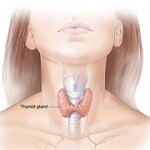
Thyroid. NIH image.
On the other hand, it is extremely simple to eliminate the risk of damage to your thyroid. If you flood your body with iodine before you are exposed to radioactive iodine, then the radioactive iodine will pass through your body harmlessly. But if you do not flood your body with iodine, then the radioactive iodine will collect in your thyroid, and you will potentially get cancer years later. So one concern during a nuclear emergency, albeit a rather minor concern in comparison to what’s going on, is flooding your thyroid with iodine.
Therefore, it is possible that some day, due to a nuclear disaster of some type, your doctor or public health authorities will recommend that you take 130 milligrams of Potassium Iodide. For example, according to the New York Department of Health, “if there is an emergency, you will hear an announcement from your local or state health officials. Your local health department will tell you when you should start taking KI and they will also tell you when you can stop taking it.” According to that site, the recommended dose for adults is 130 mg. Doses for children range from 16 to 130 mg, depending on age and weight.
You can read similar advice from the Nuclear Regulatory Commission, the Centers for Disease Control, the Food & Drug Administration, the Department of Health & Human Services, and the World Health Organization. You can also find a good discussion at Nuclear War Survival Skills, and in this article written by a physician for laypersons.

What a well-organized government distribution might look like. VA image.
After a disaster in which your local and state health authorities tell you to take potassium iodide, the hope is that your Government will spring into action and distribute the potassium iodide to the public. For it to do any good, you need to take it before being exposed to the radiation. So you need to hope that your Government will spring into action very fast. They might, but it’s probably not something you can count on. And even if they spring into action fast enough, they might not have enough for everyone. So if you get yours from the Government, that might mean that some other person won’t get any. Therefore, it would be very wise to purchase it before the emergency. Fortunately, the cost of potassium iodide is low, and like everything else, you can buy it on Amazon:
- 60 tablets, 30 mg
- 60 tablets, 30 mg
- 60 capsules, 65 mg
- 14 tablets, 130 mg
- 60 tablets, 65 mg
- 14 tablets, 65 mg
- Other Amazon listings
Keep in mind that the adult dose is 130 mg, and if you are buying for only adults, that’s probably the most convenient size. If you need smaller doses, you can cut up pills, but it might be more convenient to buy smaller dose pills. Prices can vary, so shop around the various options to find the best option for you. You can probably buy potassium iodide from your local pharmacy. I don’t believe a prescription is required, but it’s probably up to the discretion of your pharmacist. But since it’s readily available on Amazon and other online sources, I would use one of them.
All of these products are available, and are intended for human consumption. It seems to me that it’s cheap insurance to buy it now, just in case your doctor or public health authorities tell you to take it. (Note: some health food stores sell potassium iodide supplements, but some of these have doses in the microgram range, which is much too low for radiation protection. Also, the amount of potassium iodide in iodized salt is much too low to provide any protection.)
A Consideration for Those With Small Children
Potassium iodide (KI) has a very bitter taste. This is generally not a problem, as long as someone is able to swallow a pill. For very young children, however, it might be necessary to cut a pill into small parts, and/or mix it with a liquid for them to drink. Because of the taste, it is possible that they will not be able to take the medicine. Therefore, if you anticipate this as a problem, you might consider purchasing potassium iodate (KIO3), which does not have a strong taste and can be mixed with food or beverages. For more information, see this site.
Update: Apparently, the FDA is not allowing sale of potassium iodate. For more information, see this site. Page 99 of Nuclear War Survival Skills contains some tips on making potassium iodide more palatable in case you need to cut up one of the pills and feed it to young children.
An Even Cheaper Alternative
There is an even cheaper option that we should mention: You can buy the materials you need to whip up a batch in your kitchen. As outlined in Nuclear War Survival Skills, you can purchase reagent quality potassium iodide. In fact, the local high school chemistry lab might have a large bottle, since it is used in a popular experiment to make elephant toothpaste.
One bottle is sufficient to make thousands of doses. However, the contents of the bottle must be diluted many times to make them safe for human consumption in the proper dose. Your doctor or public health authorities might be reluctant to tell you to take something you whipped up in the kitchen using materials from the chemistry set. But if you’re willing to take that chance, and potentially help hundreds of your friends and neighbors, you can purchase the reagent grade potassium iodide at Amazon. Be sure to download the instructions for making it safe for human use and the information at this site. You can order from the following Amazon links:
Using Iodine Transdermally
Warning: You must never drink elemental iodine, sometimes known as tincture of iodine, sold under the brand name Betadine. It is used as an antiseptic to apply to your skin. In an emergency, you can use this product to protect your thyroid–again, not be drinking it– but by painting it on your skin. For more information, see this site. I suspect that in the case of a radiation emergency, even if this product was available, pharmacies might refuse to sell it because they would believe, possibly correctly, that some patients would drink it. However, if you are faced with a nuclear emergency and you are otherwise unprepared, it’s possible that you might have this product in your medicine cabinet.
The following websites also contain information about potassium iodide, and have it available for sale: ki4u.com and nukepills.com.
Some links on this site are affiliate links, meaning that this site earns a small commission if you make a purchase after clicking the link.

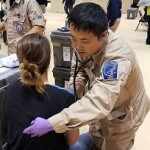

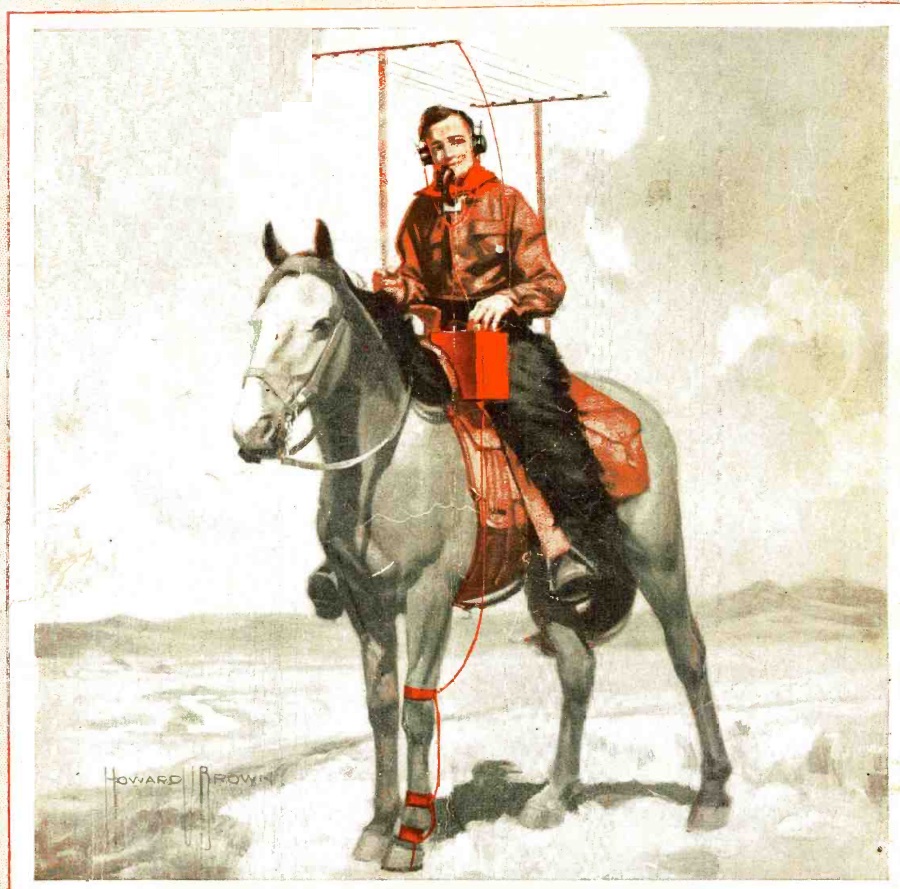
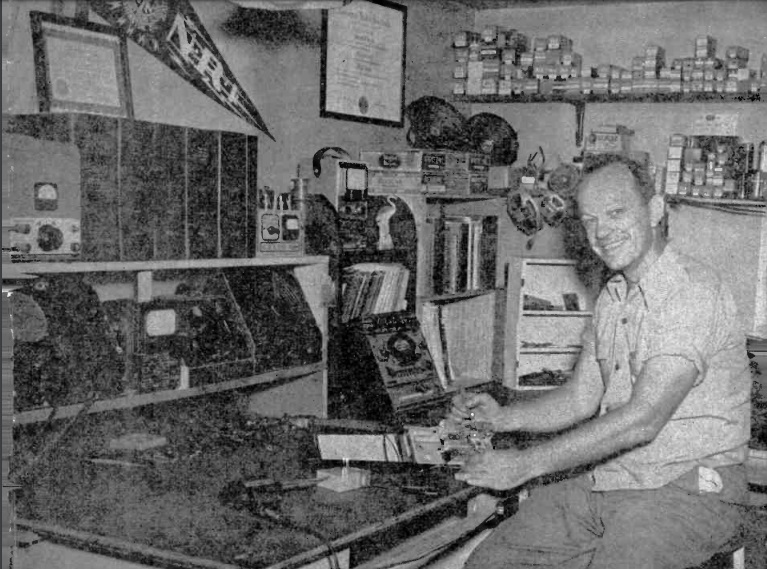 Shown here 70 years ago is Joseph J. Pekot of Nanticoke, PA, on the cover of the February 1952 issue of
Shown here 70 years ago is Joseph J. Pekot of Nanticoke, PA, on the cover of the February 1952 issue of 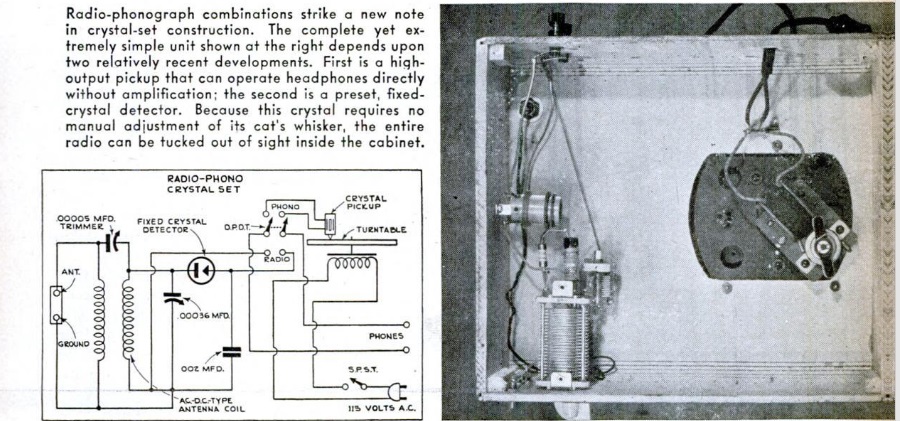
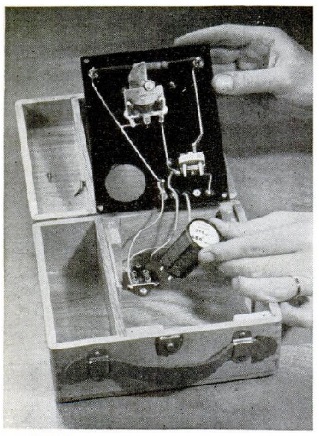
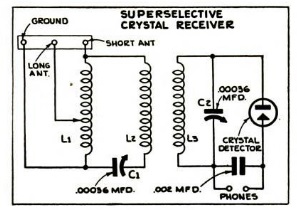 The set shown at left was said to be superselective, and the one at the right was an ideal portable. For use while camping, it needed only a long spool of wire and a stake for the ground. Finally, the set below added one tube for a stage of audio amplification.
The set shown at left was said to be superselective, and the one at the right was an ideal portable. For use while camping, it needed only a long spool of wire and a stake for the ground. Finally, the set below added one tube for a stage of audio amplification.